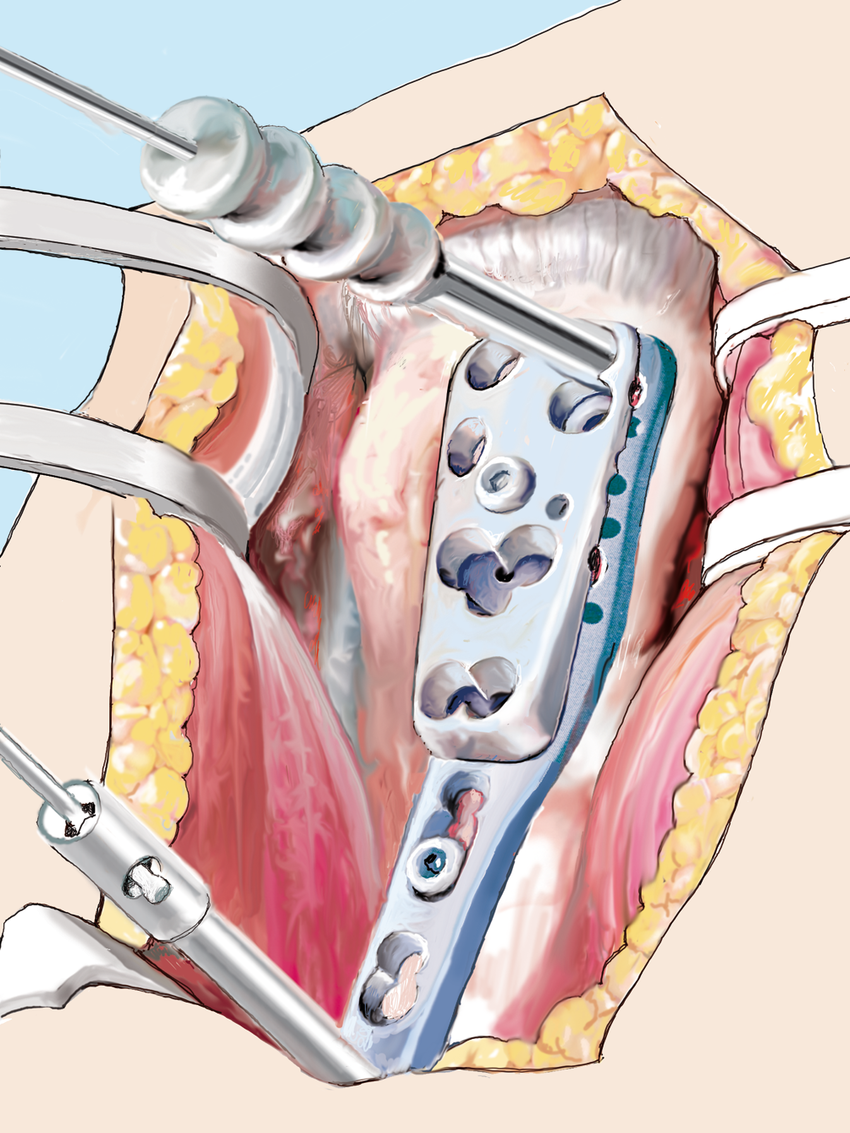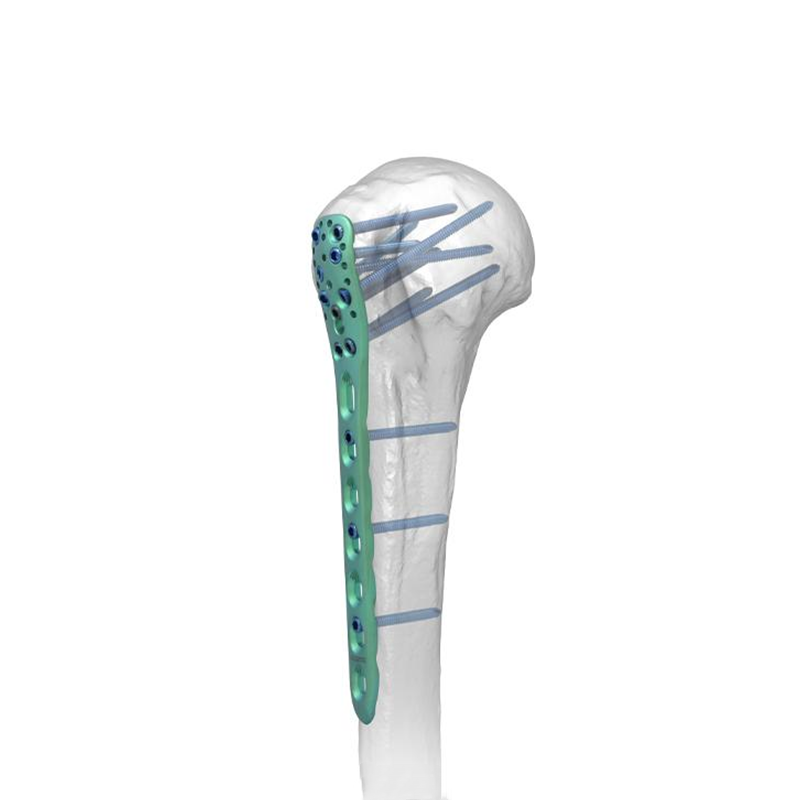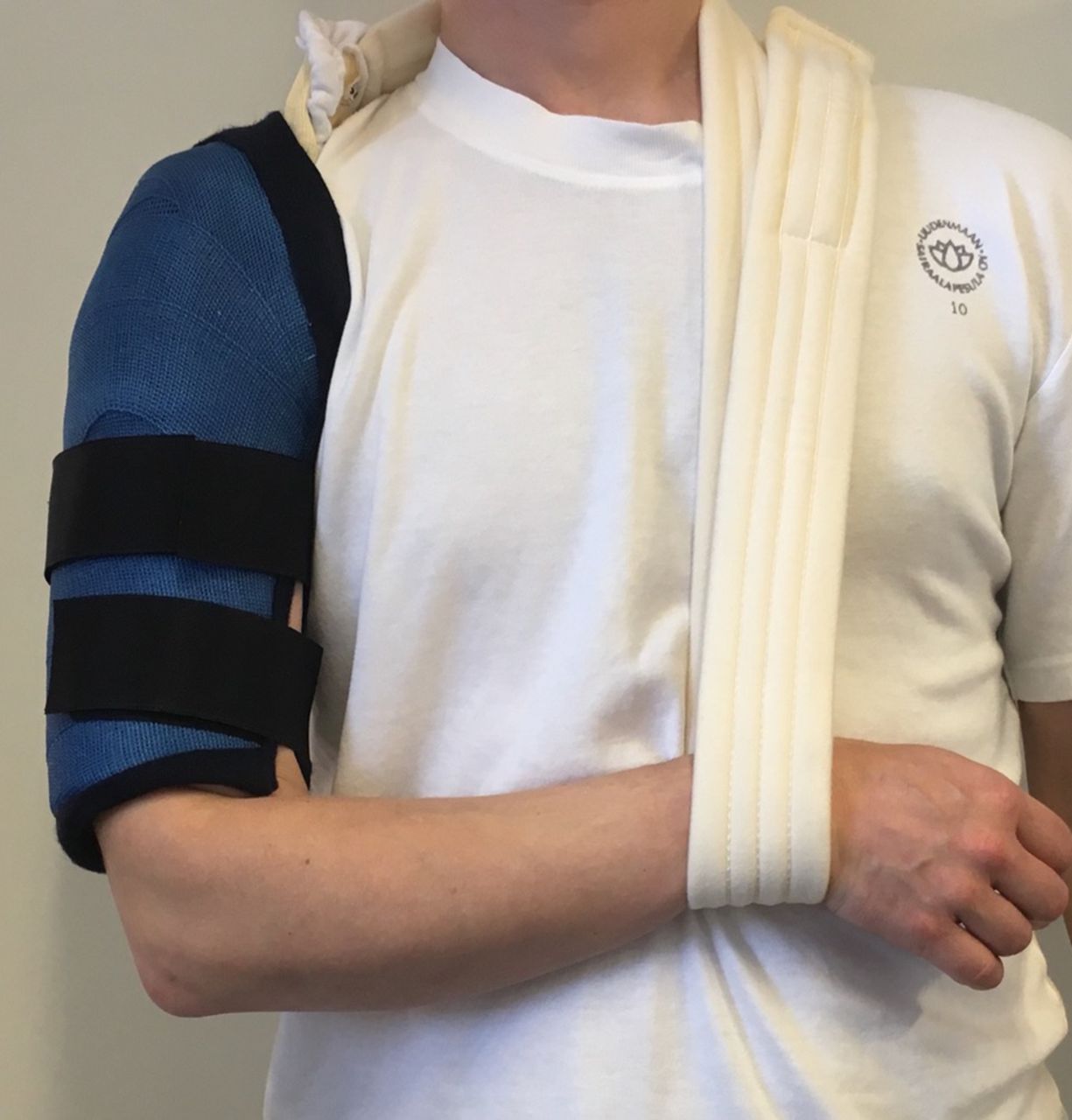Introduction
In the world of orthopedic surgery, the Proximal Humeral Locking Plate stands as a remarkable innovation that has revolutionized the treatment of fractures in the upper arm. This article delves into every aspect of this medical marvel, from its structure and functioning to the surgical procedure and recovery. If you're seeking insights into Proximal Humeral Locking Plates, you've come to the right place
What is a Proximal Humeral Locking Plate?
A Proximal Humeral Locking Plate is a specialized medical device designed to aid in the treatment of proximal humeral fractures, which are fractures occurring near the shoulder joint. It is a thin, metal implant, usually made of materials like stainless steel or titanium. These plates feature holes or slots along their length for the insertion of screws, which anchor the plate to the bone.

Evolution of Locking Plates
Locking plates, in general, have evolved significantly in recent years. Traditional plates relied on compression between the plate and bone, but locking plates take a different approach. These plates lock the screws into the plate itself, providing a more stable construct for fracture fixation.
Structure of a Proximal Humeral Locking Plate
A Proximal Humeral Locking Plate typically consists of the following components:
1. Plate Body
The main body of the plate is flat and contoured to match the shape of the proximal humerus. This ensures a snug fit and provides stability to the fractured bone.
2. Screw Holes
The plate features strategically placed holes where screws are inserted. These holes are designed to engage with the screws securely, preventing them from backing out.
3. Screws
Locking screws are an integral part of the system. They come in various lengths and diameters, and their role is to secure the plate to the bone fragments. These screws have a unique thread design that locks them into the plate.
Surgical Procedure Using a Proximal Humeral Locking Plate
1. Fracture Reduction
The surgical procedure begins with fracture reduction, where the orthopedic surgeon realigns the fractured bone fragments to their anatomically correct positions. Proper reduction is crucial for successful healing.
2. Plate Placement
Once the fracture is reduced, the surgeon positions the Proximal Humeral Locking Plate on the outer surface of the humerus, aligning it with the fracture site. The plate is contoured to fit the bone's shape.
3. Screw Fixation
Locking screws are then inserted through the plate's holes and into the bone. These screws are tightened securely, creating a stable construct that holds the bone fragments together.
4. Load Sharing
In addition to providing stability, the plate also aids in load sharing. This means that the plate helps distribute the forces applied to the bone, reducing stress on the fracture site.

Advantages of Proximal Humeral Locking Plates
The use of Proximal Humeral Locking Plates offers several advantages:
1. Stable Fixation
Locking plates provide a stable fixation, reducing the risk of complications such as non-union (failure of the bone to heal) or malunion (improper alignment of the bone).
2. Early Mobilization
Due to their stability, patients can begin early mobilization and physical therapy, which can lead to a quicker recovery and improved functional outcomes.
3. Reduced Risk of Infection
The locking screw mechanism minimizes the need for excessive screw insertion, reducing the risk of infection at the surgical site.
4. Improved Fracture Healing
Locking plates help maintain proper alignment during the critical early stages of healing, promoting better fracture healing.

Recovery and Rehabilitation
1. Post-Surgery Care
After the surgery, patients are closely monitored and provided with pain management and antibiotics to prevent infection. The surgical wound should be kept clean and dry.
2. Physical Therapy
Rehabilitation typically includes physical therapy exercises that focus on restoring shoulder mobility and strength. The presence of the locking plate allows for controlled movement during this phase.
3. Follow-Up Visits
Patients are advised to attend regular follow-up appointments with their orthopedic surgeon to assess healing progress and address any concerns.

FAQs
Q: How long does it take for a proximal humeral fracture to heal with a locking plate?
A: The healing time can vary but typically ranges from 6 to 12 weeks, depending on the severity of the fracture and individual factors.
Q: Are there any risks associated with Proximal Humeral Locking Plates?
A: While generally safe, some potential risks include infection, implant failure, or nerve and blood vessel injury. These risks are discussed with the patient before surgery.
Q: Can the locking plate be removed after the bone heals?
A: In some cases, the plate may be removed if it causes discomfort or other issues. Your surgeon will evaluate whether removal is necessary.
Q: Are there any restrictions on movement after surgery?
A: Initially, there may be restrictions, but these are gradually lifted during the recovery process as guided by your surgeon and physical therapist.
Q: How effective are Proximal Humeral Locking Plates in elderly patients?
A: Locking plates can be effective in elderly patients, but the suitability of this treatment option depends on factors like bone quality and overall health.
Q: What is the success rate of surgery with a Proximal Humeral Locking Plate?
A: Success rates are generally high, but individual outcomes may vary. It's essential to follow your surgeon's recommendations for the best results.
Conclusion
In the realm of orthopedic surgery, the Proximal Humeral Locking Plate has emerged as a game-changer for the treatment of proximal humeral fractures. Its innovative design, stable fixation, and early mobilization benefits have significantly improved patient outcomes. If you or a loved one are facing such a fracture, understanding the role of the Proximal Humeral Locking Plate can provide valuable insights and optimism for the road to recovery.
How to Buy Orthopaedic Implants and Orthopaedic Instruments?
For CZMEDITECH, we have a very complete product line of orthopedic surgery implants and corresponding instruments, the products including spine implants, intramedullary nails, trauma plate, locking plate, cranial-maxillofacial, prosthesis, power tools, external fixators, arthroscopy, veterinary care and their supporting instrument sets.
In addition, we are committed to continuously developing new products and expanding product lines, so as to meet the surgical needs of more doctors and patients, and also make our company more competitive in the whole global orthopedic implants and instruments industry.
We export worldwide, so you can contact us at email address song@orthopedic-china.com for a free quote, or send a message on WhatsApp for a quick response +86-18112515727.
English
Français
Русский
Español
العربية
Português
Deutsch
italiano
日本語
한국어
Nederlands
Tiếng Việt
ไทย
Polski
Türkçe
አማርኛ
ພາສາລາວ
ភាសាខ្មែរ
Bahasa Melayu
ဗမာစာ
தமிழ்
Filipino
Bahasa Indonesia
magyar
Română
Čeština
Монгол
қазақ
Српски
हिन्दी
فارسی
Kiswahili
Slovenčina
Slovenščina
Norsk
Svenska
українська
Ελληνικά
Suomi
Հայերեն
עברית
Latine
Dansk
اردو
Shqip
বাংলা
Hrvatski
Afrikaans
Gaeilge
Eesti keel
Māori
नेपाली
Oʻzbekcha
latviešu
অসমীয়া
Aymara
Azərbaycan dili
Bamanankan
Euskara
Беларуская мова
भोजपुरी
Bosanski
Български
Català
Cebuano
Corsu
ދިވެހި
डोग्रिड ने दी
Esperanto
Eʋegbe
Frysk
Galego
ქართული
guarani
ગુજરાતી
Kreyòl ayisyen
Hausa
ʻŌlelo Hawaiʻi
Hmoob
íslenska
Igbo
Ilocano
Basa Jawa
ಕನ್ನಡ
Kinyarwanda
गोंगेन हें नांव
Krio we dɛn kɔl Krio
Kurdî
Kurdî
Кыргызча
Lingala
Lietuvių
Oluganda
Lëtzebuergesch
Македонски
मैथिली
Malagasy
മലയാളം
Malti
मराठी
ꯃꯦꯇꯥꯏ (ꯃꯅꯤꯄꯨꯔꯤ) ꯴.
Mizo tawng
Chichewa
ଓଡ଼ିଆ
Afaan Oromoo
پښتو
ਪੰਜਾਬੀ
Runasimi
Gagana Samoa
संस्कृत
Gaelo Albannach
Sepeti
Sesotho
chiShona
سنڌي
Soomaali
Basa Sunda
Wikang Tagalog
Тоҷикӣ
Татарча
తెలుగు
ትግንያውያን
Xitsonga
Türkmençe
संस्कृत
ئۇيغۇرچە
Cymraeg
isiXhosa
ייִדיש
Yorùbá
isiZulu














